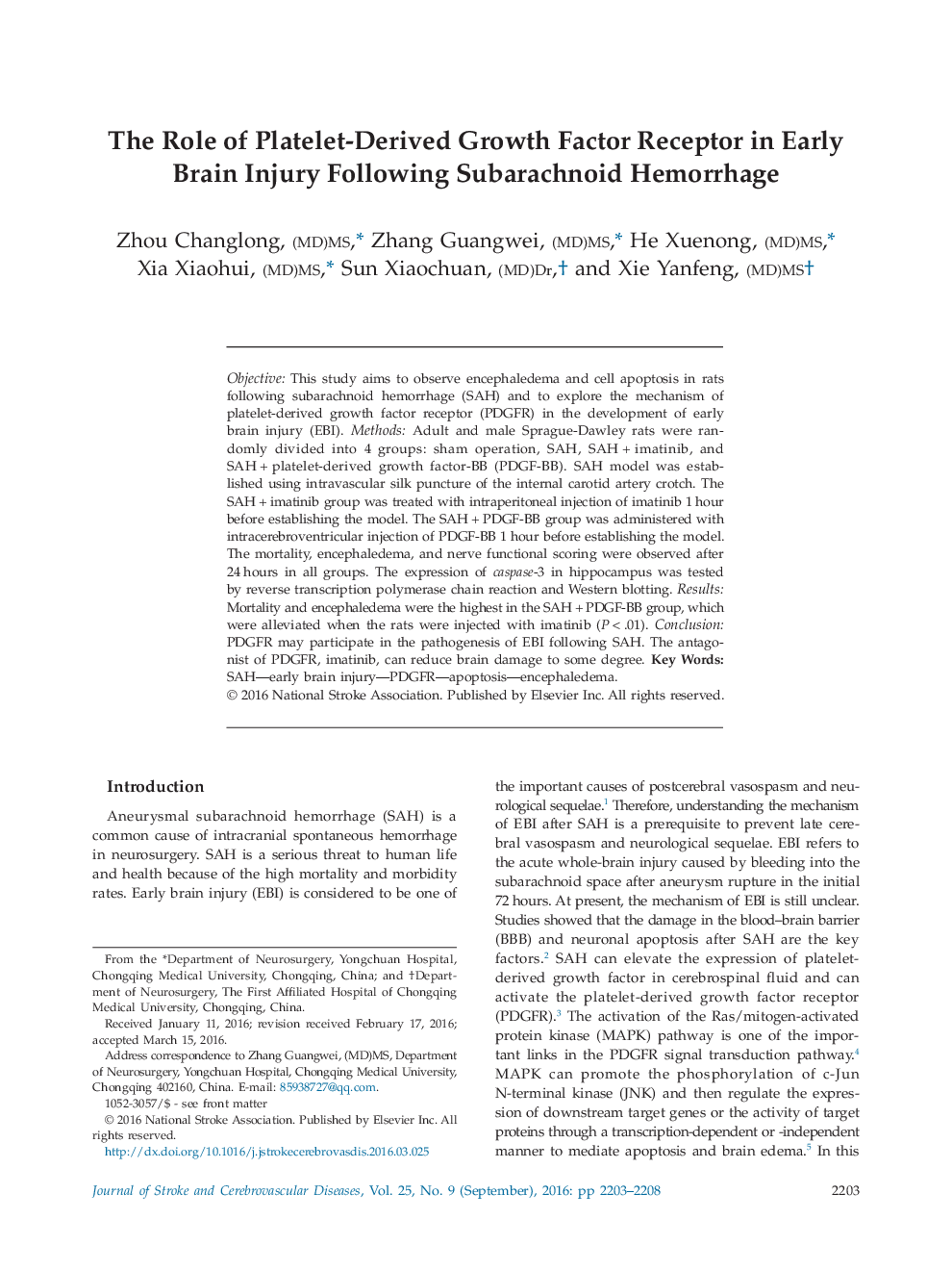| Article ID | Journal | Published Year | Pages | File Type |
|---|---|---|---|---|
| 2703672 | Journal of Stroke and Cerebrovascular Diseases | 2016 | 6 Pages |
ObjectiveThis study aims to observe encephaledema and cell apoptosis in rats following subarachnoid hemorrhage (SAH) and to explore the mechanism of platelet-derived growth factor receptor (PDGFR) in the development of early brain injury (EBI).MethodsAdult and male Sprague-Dawley rats were randomly divided into 4 groups: sham operation, SAH, SAH + imatinib, and SAH + platelet-derived growth factor-BB (PDGF-BB). SAH model was established using intravascular silk puncture of the internal carotid artery crotch. The SAH + imatinib group was treated with intraperitoneal injection of imatinib 1 hour before establishing the model. The SAH + PDGF-BB group was administered with intracerebroventricular injection of PDGF-BB 1 hour before establishing the model. The mortality, encephaledema, and nerve functional scoring were observed after 24 hours in all groups. The expression of caspase-3 in hippocampus was tested by reverse transcription polymerase chain reaction and Western blotting.ResultsMortality and encephaledema were the highest in the SAH + PDGF-BB group, which were alleviated when the rats were injected with imatinib (P < .01).ConclusionPDGFR may participate in the pathogenesis of EBI following SAH. The antagonist of PDGFR, imatinib, can reduce brain damage to some degree.
